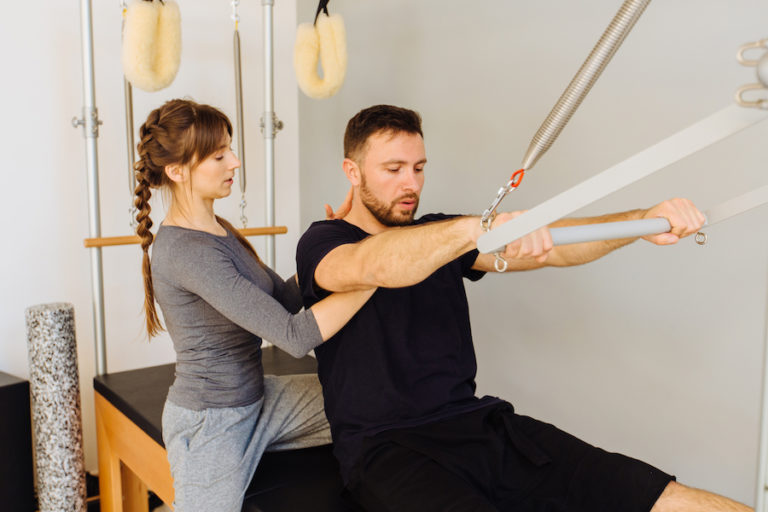5 PT Patient Appointment Scheduling Methods for Optimizing Your Practice
Making the most of the time that you spend with your physical therapy patients can be difficult. From the first appointment to follow ups, the time you need to complete administrative tasks often takes up time that could be spent with the patient.
At HENO, one of the biggest mistakes we see physical therapists make is mismanaging the way they schedule appointments. Patient appointment scheduling is at the heart of practice management (and practice profitability.) And yet, it’s an area that’s often overlooked when PTs run into trouble.
We’re here to help. Here are 5 patient appointment scheduling methods to help you optimize your PT practice.
#1: Schedule Appointments in Blocks
You’ll make the most efficient use of your time if you schedule your appointments in blocks, trying to stick to back-to-back appointments whenever possible. One of the methods we recommend is to schedule morning appointments from noon backward to whatever time you open, and afternoon appointments from noon forward to your closing time.
The benefit of this method is that it minimizes downtime and allows you to use blocks of time when you don’t have patients scheduled to handle administrative work, have staff meetings and hold training sessions.
#2: Enable Patients to Schedule Their Own Appointments
It might seem counterintuitive to allow patients to schedule their own appointments, but there’s mounting evidence that patients prefer to choose their own appointment slots and to handle the scheduling themselves. An article in Healthcare IT News found that as many as half of all patients will avail themselves of self-scheduling tools when medical practices are closed.
The best way to allow patients to manage their own scheduling is to choose a practice management solution that includes a patient portal and self-scheduling tools. With HENO, you can let patients know which time slots you have open and allow them to book their own appointments. Then, you can schedule automatic reminders to minimize no-shows.
It’s also worth noting that 29% of self-scheduled patient appointments are for the same day or the next day, which is something that can help you fill empty spots in your schedule left by cancellations.
#3: Implement a Robust Patient Reminder System
There’s no question that many physical therapy practice owners struggle with patient cancellations and no-shows. They can be frustrating and costly and it’s important to have a strategy to deal with them.
One of the best ways to minimize cancellations and no-shows is to implement a robust system to send out patient reminders. It’s not enough to send out a single reminder. We suggest starting a week before the appointment and allowing patients to click a link in the reminder (if it’s an email or text) to cancel and reschedule.
On a related note, you may also want to implement a system of cancellation penalties. For example, you could require patients to cancel 24 hours ahead of time and charge them a fee if they cancel last minute. You can also charge patients your full fee if they no-show for an appointment.
#4: Create a Patient Waiting List to Fill Your Schedule
When patients cancel and you don’t fill their appointment slots, your practice loses money. One effective way to minimize your losses is to create a patient waiting list. When patients schedule an appointment, give them an option to let you know if they’d prefer an earlier slot than the one they have. Then, if a patient ahead of them cancels, you can call or text them to see if they want the appointment.
This is a method that can help you to schedule more efficiently and help patients out by allowing them some flexibility when you can. When patients are in pain, they’ll appreciate the opportunity to get in to see you earlier than scheduled.
#5: Double Book Patients Strategically
It’s not a good idea to overbook your schedule, but there are times when a strategic double-booking may make sense. For example, you may be able to schedule a new patient at the same time as a patient who needs a quick follow-up appointment.
While your staff is walking your new patient through the intake process — even if that means giving them a tablet and showing them how to use your patient portal — you can see the follow-up patient. Then, when you’re done with that appointment, you can bring the new patient in and take care of them.
It is extremely important to be mindful of how and when you double book. You don’t want your patients to get frustrated waiting for you. Instead, think about how much time you’ll need for each patient and plan accordingly.
Patient appointment scheduling can be tricky to manage. However, the 5 methods we’ve listed here can help you make the most of your time while also giving patients the opportunity to choose the appointment times that work best for them.
Need assistance with patient appointment scheduling? Click here to schedule a free demo and learn how HENO can help!






